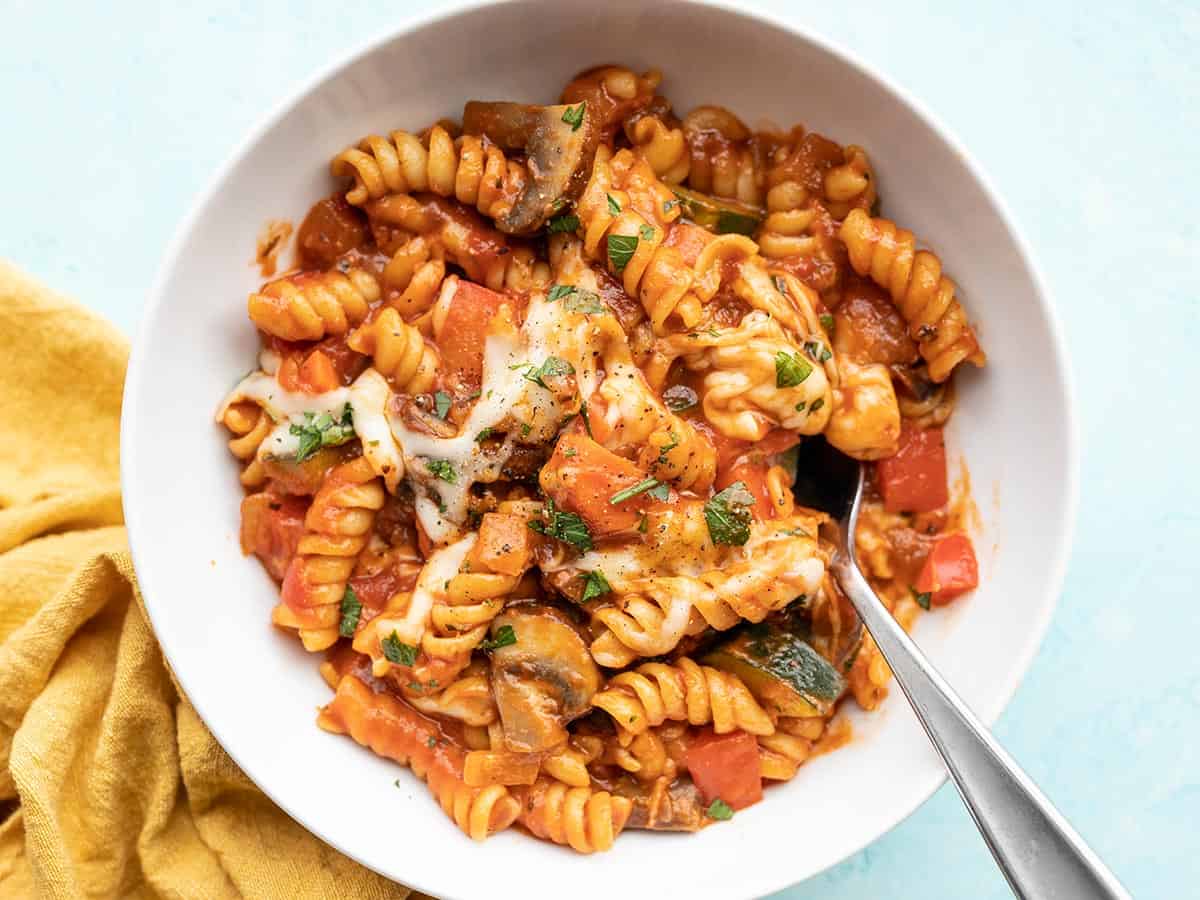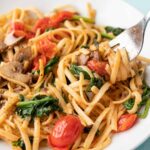Craving delicious, healthy pasta dishes without the fuss? Imagine vibrant plates brimming with colorful vegetables, perfectly cooked pasta, and tantalizing sauces, all prepared in a flash. This collection of quick and easy flexitarian pasta recipes offers a delightful journey through a world of flavor and convenience. From creamy tomato and vegetable pasta to zesty lemon garlic shrimp and asparagus, each recipe is designed to minimize time in the kitchen while maximizing taste and nutritional benefits. Prepare to elevate your weeknight dinners with exciting, adaptable recipes that cater to diverse dietary preferences.
These recipes embrace the flexitarian lifestyle, seamlessly blending meat and vegetarian options to create satisfying and versatile meals. Discover the joy of incorporating nutrient-rich vegetables into your pasta dishes, boosting their flavor profile and nutritional value. We’ll explore simple techniques for perfectly cooked pasta, quick sauce creations, and smart shortcuts for vegetable preparation. Whether you’re a seasoned cook or a kitchen novice, these recipes will empower you to create restaurant-quality pasta dishes with ease.
Quick and Easy Flexitarian Pasta Recipes

Pasta, a culinary staple across the globe, often conjures images of rich, creamy sauces and generous portions of meat. However, a vibrant and equally satisfying alternative exists: the flexitarian pasta dish. These recipes embrace the flexibility of incorporating both meat and vegetables, offering a delicious and nutritious way to enjoy pasta without sacrificing flavor or satisfaction. The appeal lies in their versatility, allowing for quick weeknight meals as well as more elaborate weekend creations.
The benefits of adding vegetables to your pasta meals are numerous. Beyond the obvious nutritional boost – increased fiber, vitamins, and minerals – vegetables add texture, color, and a depth of flavor that elevates even the simplest pasta dish. Think of the bright pop of color from sun-dried tomatoes, the satisfying crunch of roasted vegetables, or the subtle sweetness of peas. These additions not only enhance the visual appeal but also create a more balanced and wholesome meal.
Recipe Types Covered
This collection features a variety of quick and easy flexitarian pasta recipes, designed to cater to various skill levels and dietary preferences. We’ll explore recipes that showcase the versatility of vegetables, ranging from simple additions like spinach and mushrooms to more complex preparations involving roasted vegetables or vibrant pesto sauces. Each recipe emphasizes speed and simplicity, ensuring that even busy weeknights can accommodate a delicious and healthy pasta dinner. Expect recipes that minimize prep time and utilize readily available ingredients, making healthy eating convenient and enjoyable. Examples include a quick tomato and spinach pasta with a hint of garlic, a vibrant pesto pasta with roasted vegetables, and a creamy mushroom and vegetable pasta with a touch of parmesan.
Recipe Variations and Adaptations
Pasta dishes offer incredible versatility, easily adapting to various dietary needs and preferences. A simple swap of ingredients can transform a familiar recipe into a unique culinary experience, expanding your flexitarian repertoire and satisfying a wide range of tastes. This section explores how to modify recipes for different diets and create exciting new flavor profiles.
Adapting Recipes for Dietary Needs
Dietary restrictions shouldn’t limit your culinary creativity. Many flexitarian pasta recipes can be easily adjusted to accommodate gluten-free, vegan, or other specific diets. Careful ingredient selection is key to maintaining both flavor and nutritional value.
- Gluten-Free Adaptation: Substituting traditional wheat pasta with gluten-free alternatives like brown rice pasta, lentil pasta, or quinoa pasta is straightforward. Ensure that any other gluten-containing ingredients, such as soy sauce (some brands contain wheat), are replaced with gluten-free versions. For instance, tamari is a great gluten-free soy sauce substitute.
- Vegan Adaptation: Many flexitarian recipes already incorporate plant-based elements. To make a recipe fully vegan, focus on eliminating dairy products. Replace parmesan cheese with nutritional yeast for a cheesy flavor, or use vegan cream cheese or cashew cream for creamy sauces. Ensure that any broths or stocks used are also vegan-friendly.
- Dairy-Free Adaptation: Similar to vegan adaptations, removing dairy is often achieved by replacing cheese with nutritional yeast or vegan alternatives. Cream-based sauces can be substituted with plant-based milk (like almond or soy milk) thickened with cornstarch or arrowroot powder.
Ingredient Substitution for Unique Flavor Combinations
Experimenting with different ingredients opens a world of flavor possibilities. Swapping vegetables, herbs, spices, and even the type of pasta can drastically alter the taste profile of your dish.
- Vegetable Swaps: Instead of using the suggested vegetables, try substituting them with seasonal produce. For example, roasted butternut squash could replace zucchini in a creamy pasta, or asparagus could be added alongside spinach for a spring-inspired dish. The possibilities are endless depending on your preference and seasonal availability.
- Herb and Spice Variations: Adding different herbs and spices can dramatically change the flavor profile. A simple swap from basil to oregano can transform an Italian-style pasta into a Mediterranean-inspired one. Experimenting with chili flakes for a spicy kick or smoked paprika for a smoky depth can also add exciting new dimensions.
- Pasta Shape Exploration: Different pasta shapes pair better with different sauces and ingredients. Long, thin pasta like spaghetti is ideal for light sauces, while shorter pasta like penne or rotini works well with chunkier sauces and ingredients.
Adding Different Proteins and Vegetables
Flexitarian diets embrace both plant-based and animal-based protein sources. Adding different proteins and vegetables allows for customization and increased nutritional value.
- Protein Additions: Consider adding grilled chicken, shrimp, chickpeas, lentils, or tofu to your pasta dishes. These additions not only increase the protein content but also add different textures and flavors. For example, adding pan-seared chicken breast to a pesto pasta creates a satisfying and protein-rich meal.
- Vegetable Enhancements: Incorporate a wider variety of vegetables to boost the nutritional value and add visual appeal. Roasted vegetables, such as bell peppers, broccoli, or Brussels sprouts, add a delicious char and contrasting texture. Consider adding sautéed mushrooms, sun-dried tomatoes, or artichoke hearts for added flavor and depth.
Serving Suggestions and Presentation
Elevating your quick and easy flexitarian pasta dishes from simple weeknight meals to visually appealing and satisfying culinary experiences involves thoughtful consideration of complementary sides and attractive presentation techniques. The right accompaniments and garnishes can transform a straightforward pasta dish into a memorable meal.
Proper storage ensures that leftover pasta retains its freshness and flavor, minimizing waste and maximizing enjoyment. These aspects, combined with the recipes themselves, contribute to a complete and enjoyable dining experience.
Complementary Side Dishes
A well-chosen side dish can balance the flavors and textures of your pasta, creating a more complete and satisfying meal. Consider the overall profile of your pasta dish when selecting a side. For example, a lighter pasta might pair well with a richer side, while a heavier, creamier pasta might benefit from a fresher, lighter counterpoint.
- A vibrant green salad with a light vinaigrette offers a refreshing contrast to richer pasta sauces. Imagine crisp romaine lettuce, juicy cherry tomatoes bursting with sweetness, and thinly sliced cucumbers providing a cool crunch. A lemon-herb vinaigrette would add brightness and acidity.
- Garlic bread, toasted to a golden brown and glistening with melted butter and herbs, provides a satisfying textural contrast and complements many pasta sauces. The warm, savory notes of the garlic bread enhance the overall experience.
- Roasted vegetables, such as broccoli, asparagus, or bell peppers, add color, texture, and nutritional value. Imagine the vibrant green of roasted broccoli florets, their slightly charred edges hinting at their caramelized sweetness, alongside the bright red and yellow of roasted bell peppers.
- A simple side of steamed green beans, lightly seasoned with salt and pepper, offers a clean and healthy counterpoint to heavier pasta dishes. Their bright green color provides a visual appeal and a subtle earthy flavor.
Garnishing Ideas
Garnishes add a final touch of visual appeal and sometimes even enhance the flavor profile of your pasta. A simple garnish can elevate the presentation significantly, making the dish more enticing.
- Fresh herbs, such as basil, parsley, or oregano, add pops of color and fresh, aromatic notes. Imagine vibrant green basil leaves scattered artfully across a creamy tomato pasta, their fragrance wafting up to tantalize the senses.
- Grated Parmesan cheese, sprinkled generously over the pasta, adds a salty, umami flavor and a visually appealing texture. The fine strands of cheese create a delicate snow-like effect, contrasting beautifully with the pasta’s color.
- A drizzle of high-quality olive oil adds richness and shine, enhancing the overall visual appeal. The glistening oil highlights the colors of the pasta and its ingredients.
- Toasted pine nuts or breadcrumbs add a crunchy texture and a nutty flavor, creating a pleasing contrast in both taste and texture. The golden-brown color of toasted pine nuts provides a visual warmth to the dish.
Proper Storage of Leftovers
Allow pasta to cool completely before storing to prevent bacterial growth. Transfer the pasta to an airtight container, ensuring it’s well sealed to maintain freshness. Store the container in the refrigerator for up to three days. When reheating, do so gently to avoid overcooking and drying out the pasta. A microwave or stovetop are both suitable options, but monitor carefully to prevent burning.
From simple spinach and ricotta to spicy sausage and broccoli rabe, this culinary adventure proves that healthy, delicious, and quick pasta dishes are entirely achievable. The adaptable nature of these recipes allows you to tailor them to your preferences and dietary needs, making them perfect for weeknight meals, casual gatherings, or even a satisfying solo dinner. So, ditch the takeout menus and embrace the ease and excitement of crafting your own flavorful flexitarian pasta masterpieces. The vibrant colors, satisfying textures, and delightful tastes await – your culinary journey begins now!
FAQ Guide
Can I use gluten-free pasta in these recipes?
Absolutely! Most of these recipes can be easily adapted using gluten-free pasta. Just ensure your pasta is cooked according to the package directions.
How can I make these recipes even faster?
Use pre-chopped vegetables, pre-made pesto, or jarred sauces to significantly reduce prep time. Consider using quick-cooking pasta varieties.
What if I don’t like a specific vegetable in a recipe?
Feel free to substitute vegetables based on your preferences. The recipes are guidelines; get creative and experiment with your favorite veggies!
How long can I store leftover pasta?
Store leftovers in an airtight container in the refrigerator for up to 3-4 days. Reheat gently before serving.


